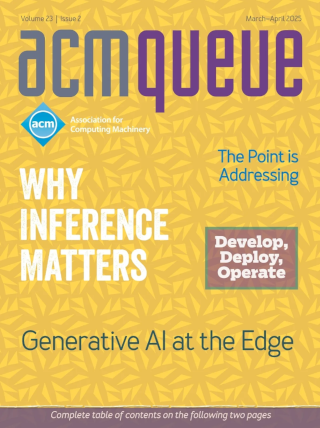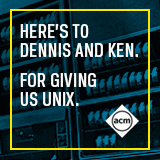
Controlling Queue Delay:
A modern AQM is just one piece of the solution to bufferbloat.
Nearly three decades after it was first diagnosed, the "persistently full buffer problem" recently exposed as part of "bufferbloat", is still with us and made increasingly critical by two trends. First, cheap memory and a "more is better" mentality have led to the inflation and proliferation of buffers. Second, dynamically varying path characteristics are much more common today and are the norm at the consumer Internet edge. Reasonably sized buffers become extremely oversized when link rates and path delays fall below nominal values.
My Compiler Does Not Understand Me:
Until our programming languages catch up, code will be full of horrors.
Only lately have a lot of smart people found audiences for making sound points about what and how we code. Various colleagues have been beating drums and heads together for ages trying to make certain that wise insights about programming stick to neurons. Articles on coding style in this and other publications have provided further examples of such advocacy.
Getting What You Measure:
Four common pitfalls in using software metrics for project management
Software metrics - helpful tools or a waste of time? For every developer who treasures these mathematical abstractions of software systems there is a developer who thinks software metrics are invented just to keep project managers busy. Software metrics can be very powerful tools that help achieve your goals but it is important to use them correctly, as they also have the power to demotivate project teams and steer development in the wrong direction.
A Guided Tour through Data-center Networking:
A good user experience depends on predictable performance within the data-center network.
The magic of the cloud is that it is always on and always available from anywhere. Users have come to expect that services are there when they need them. A data center (or warehouse-scale computer) is the nexus from which all the services flow. It is often housed in a nondescript warehouse-sized building bearing no indication of what lies inside. Amidst the whirring fans and refrigerator-sized computer racks is a tapestry of electrical cables and fiber optics weaving everything together -- the data-center network. This article provides a "guided tour" through the principles and central ideas surrounding the network at the heart of a data center -- the modern-day loom that weaves the digital fabric of the Internet.
Modeling People and Places with Internet Photo Collections:
Understanding the world from the sea of online photos
This article describes our work in using online photo collections to reconstruct information about the world and its inhabitants at both global and local scales. This work has been driven by the dramatic growth of social content-sharing Web sites, which have created immense online collections of user-generated visual data. Flickr.com alone currently hosts more than 6 billion images taken by more than 40 million unique users, while Facebook.com has said it grows by nearly 250 million photos every day.



